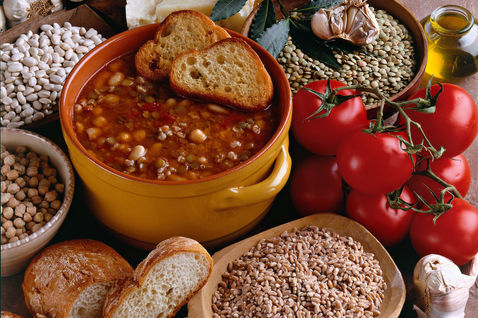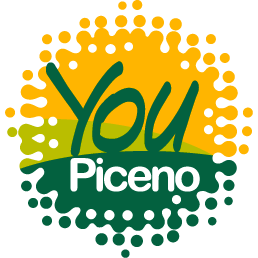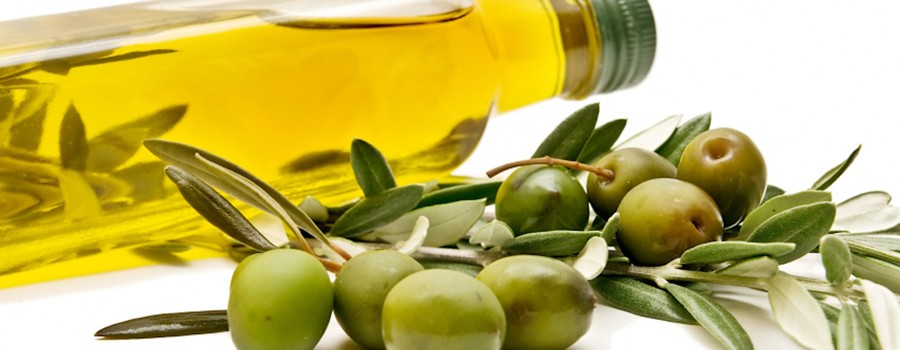Ripatransone is one of three hamlets in the Piceno area to be awarded the Orange Flag by the Touring Club Italiano, a recognition of quality assigned to small towns in the Italian hinterland for excellence in tourism and environmental sustainability.
Nestling behind its Medieval and Renaissance walls, Ripatransone is blessed with a view which has rightly earned it the title of “Balcony of the Piceno”. With its five museums, imposing buildings and monuments, including the small L. Mercatini theatre, founded in 1824, and a unique culinary heritage that traces its origins back to ancient times, Ripatransone is without doubt a priceless gem.
And it is right here in Ripatransone that we can find a hill speciality, one of the most ancient recipes of the Piceno area. Ciavarro is a soup of beans and wheat from the winter stores, then cooked in the first weeks of spring (traditionally on 1 May), when larders were emptied to make room for the wonderful fresh produce of summer!
A renowned oil producer, Ripatransone is full of olive mills and farms specializing in oil and the soft Ascoli olive, used to make the justly popular oliva ascolana, Ascoli-style fried olives.
Olive farming in the Piceno area has an ancient pedigree, as testified by Medieval documents in which it is stated that ships docking in the Po River were required to pay a toll of 25 ounces of a type of olive oil called “Ripatico”, a name that probably denotes a connection with Ripatransone.
Oil is precisely the star of a 2014 Piceno Senso Creativo project event, dedicated to the protection and promotion of speciality products from the Piceno area and on 18–19 October, Ripatransone will host OlioFest, an event organized in collaboration with local olive farmers.
Piceno recipes
The “ciavarro” recipe
Serves 6
100g lentils; 100g chick peas; 100g chickling peas; 100g wheat; 100g pearl barley; 100g fava beans; 100g white beans; 100g borlotti beans; 100g flour; 100g sweet corn; extra virgin olive oil; tomato pulp; 1 onion; a few garlic cloves; chili pepper; salt.
Preparation
Leave the sweetcorn to soak for 12 hours, drain, and dry in the oven, then soak again until the next day. Meanwhile, soak the other pulses and cereals for at least 12 hours. Drain and cook the ingredients in separate pans. Sauté oil, onion and garlic, and add the tomato pulp. Cook this light sauce and pour into a saucepan along with the pulses and some of the cooking water. Leave to flavour over a medium heat for about 15 minutes and serve.
Travel tips
Where to stay
Azienda agraria agrituristica “Il podere del Nonno”
Via Sant’Imero; tel. 3332180559; info@ilpoderedelnonno.it; www.ilpoderedelnonno.it
Eating out
Agriturismo “La Contrada”
Contrada Magazzini, 9; tel. 0735 90522; info@lacontrada.com, www.lacontrada.com
What to see
Museo Sistino Vescovile, Via Vittorio Emanuele
Christmas–Easter–Summer Scheduled opening
Entrance fee €1.00
Museo civico Palazzo Bonomi Gera, Via Vittorio Emanuele
January – June 10.30 am–6.30 pm (Sat–Sun)
July–August 4 – 7 pm (Tues–Fri)
September–December 3.30 pm–6.30 pm (Sat–Sun)
Entrance fee €3.50 (full); €2.50 (reduction); €5.00 (municipal museum complex); €10.00 (museum network ticket)
Museo Civico Archeologico “C. Cellini”, Via Vittorio Emanuele
All year round 10 am–12 pm; 4 pm–7 pm (Tues–Sun)
Entrance fee Free of charge
Museo del fischietto e del vasaio, Via Garibaldi
All year round By prior booking
Entrance fee Free of charge
Museo della civiltà contadina e artigiana, Church of San Filippo
All year round By prior booking
Entrance fee Free of charge
Shopping
Azienda Agricola Frattini Laura – Oil
Via Canali, 33; tel 0735.97104
Il forno di Ripa – typical confectionery and bakery products
Corso Vittorio Emanuele II, 71; 0735.99203
Art Studio di Giovanni Tonelli – objets d’art, scagliola marble decor, painting, restoration
Contrada Magazzini, 1/bis; 073590529; giotonelliart@libero.it; www.giotonelli.eu
Themed events
18–19 October 2014



















